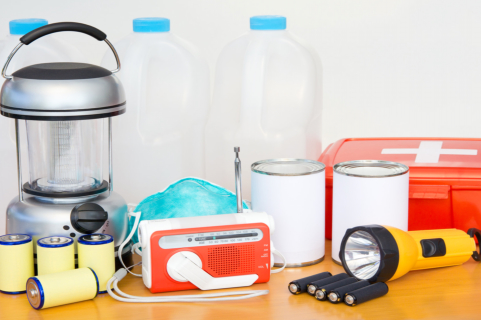
Because we cannot keep emergencies and disasters from happening, we need to be always prepared for them. This is the call we extend to every person or organization we assist as Emergency Training Consultants in Washington, DC. Most of the assistance we provide is through scenario-based training so participants can have a practical example of what to do during emergency instances.
Along with these training sessions, it also helps to prepare an emergency kit at home. These kits are your go-to containers which contain essentials to help you survive the days after a disaster. So, what should be placed inside these emergency kits? Here are the basic ones although you can customize according to your needs:
- Drinking Water
Ideally, it should be a gallon for every person per day. This amount can already supply you for three days while on evacuation. You can add stocking to last for at least two weeks. - Food
This is where canned foods become very essential as they can be ready-to-eat, easy-to-prepare, and has a longer shelf life. For further options, our Emergency Preparedness Consultant in Washington, DC can also provide more guidance. - Flashlight with Batteries
Understandably, emergency situations result in power outages. You will need to be able to see your surroundings clearly so you can step away from further hazards. - Extra Batteries
Be ready with extra batteries for your other devices that will need a power supply. While it’s essential to have the power supply restored immediately, this is not easily promised in disaster events. - Hand-Crank Radio
In the events that disasters result to signal outages, communication becomes a challenge. You will need to know the latest report on your present situation. Even without electricity, the hand-crank radio can still function and can connect you to information delivered through the airwaves. - First Aid Kit
Your emergency kit should also contain first aid medicines. These medications are not going to treat serious injuries, but it prevents early complications and helps extend the patient’s life. - Sanitation Items
Disaster scenarios can put you and your family in an unsanitized environment, which can put you all at risk for health issues. You can protect your family by using sanitary supplies which you will also include in your emergency kit. - Emergency Blanket
The weather elements can be very harsh after a disaster scenario and your clothing is your closest protection. However, keeping an emergency blanket keeps you further protected especially from extreme heat or cold. - Extra Cash
Set aside just enough amount of cash that you can use immediately when an emergency happens. Being able to buy your additional supplies can be a great reliever.
These are only snippets of preparing for emergency situations. There are further information and assistance when you enroll in a Disaster and Risk Management Training from our team at Strategic Educational Consulting, LLC. Whether you’re staying in a disaster-prone area or not, make it your point to be prepared. This way, you keep your family or staff safe from further complications.
Is this post helpful? SHARE!


